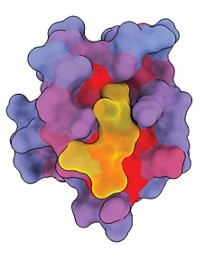Advertisement
Grab your lab coat. Let's get started
Welcome!
Welcome!
Create an account below to get 6 C&EN articles per month, receive newsletters and more - all free.
It seems this is your first time logging in online. Please enter the following information to continue.
As an ACS member you automatically get access to this site. All we need is few more details to create your reading experience.
Not you? Sign in with a different account.
Not you? Sign in with a different account.
ERROR 1
ERROR 1
ERROR 2
ERROR 2
ERROR 2
ERROR 2
ERROR 2
Password and Confirm password must match.
If you have an ACS member number, please enter it here so we can link this account to your membership. (optional)
ERROR 2
ACS values your privacy. By submitting your information, you are gaining access to C&EN and subscribing to our weekly newsletter. We use the information you provide to make your reading experience better, and we will never sell your data to third party members.
Biological Chemistry
Method Identifies Novel Enzymes And Metabolites
Scientists use solute-binding proteins to characterize bacterial systems in metabolic pathways
by Stu Borman
January 12, 2015
| A version of this story appeared in
Volume 93, Issue 2
The number of protein sequences found in genome-sequencing studies continues to grow, but the ability to decipher the functions of the corresponding proteins has not kept pace. Characterizing more enzymes and other proteins identified in sequencing projects could lead to the industrial use of new enzymes and pathways and better define nature’s metabolic repertoire. Researchers from two multidisciplinary programs, the Enzyme Function Initiative and the New York Structural Genomics Research Consortium, have now developed a new approach for defining protein function in which bacterial solute-binding proteins (SBPs) are screened against tailored chemical libraries or even entire metabolomes (Biochemistry 2014, DOI: 10.1021/bi501388y). SBPs grab small molecules outside bacterial cells that are initial reactants for metabolic pathways and shepherd them through cell membranes and into the cytosol. The study defined ligand-binding preferences for more than 2,000 SBPs and found numerous metabolic pathways. “These efforts begin to define an integrated strategy for realizing the full value of amassing genome sequence data,” the researchers note.



Join the conversation
Contact the reporter
Submit a Letter to the Editor for publication
Engage with us on Twitter